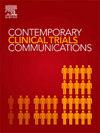比较足和手反射对结肠镜候选人焦虑和生理指标的影响:一项随机临床试验
IF 1.4
Q4 MEDICINE, RESEARCH & EXPERIMENTAL
引用次数: 0
摘要
前言和目的结肠镜检查是标准的诊断程序,但术前焦虑仍然是一个普遍关注的问题。虽然药物干预是可用的,非药物的方法,如反射疗法提供了一个有希望的选择。尽管它的治疗潜力,比较证据足和手反射在这种情况下是有限的。本研究旨在评估其对结肠镜检查前焦虑和生理参数的影响。该随机临床研究于2022年11月至2023年8月在伊朗阿拉克的Amir al-Momenin教育和治疗中心进行。105例患者被随机分为三个大小相等的组(n = 35):足部反射疗法组、手部反射疗法组和对照组。干预组患者接受30分钟的反射疗法。使用Spielberger状态-特质焦虑量表(STAI-Y1)评估焦虑水平,这是一种有效的测量情境焦虑的工具。在干预前后立即测量生理指标,包括收缩压、舒张压、心率、动脉血氧饱和度(SpO2)。结果两组患者的临床结局在基线时无显著差异(p >;0.05)。然而,干预后,两组患者的平均焦虑评分(足部反射:44.39±5.21;单因素方差分析(ANOVA)显示,手反射学(45.6±4.49)显著低于对照组(48.05±4.81)(p = 0.008)。足部按摩组的焦虑减轻比手部按摩组更明显,尽管这种差异没有达到统计学意义(p >;0.05)。此外,干预后评估显示收缩压有显著差异(足部反射:123.48±16.40 mmHg;手部反射:122.65±14.97 mmHg;对照组:132.14±18.48 mmHg)和心率(足部反射:78.60±9.54 bpm;手反射:78.25±11.41 bpm;对照组:85.05±10.82 bpm) (p <;0.05)。然而,两组间舒张压或动脉血氧饱和度(SPO2)无显著差异(p >;0.05)。结论本研究结果表明,反射疗法,特别是足部反射疗法,可以显著减少结肠镜检查患者的焦虑,并改善收缩压和心率等生理参数。这些结果突出了反射疗法的潜力,作为一种有效的补充方法,以管理焦虑和提高患者舒适度在医疗过程中。本文章由计算机程序翻译,如有差异,请以英文原文为准。
Comparing the impact of foot and hand reflexology on anxiety and physiological indices in colonoscopy candidates: A randomized clinical trial
Introduction and objective
Colonoscopy is a standard diagnostic procedure, yet pre-procedural anxiety remains a prevalent concern. While pharmacological interventions are available, non-pharmacological approaches such as reflexology offer a promising alternative. Despite its therapeutic potential, comparative evidence on foot and hand reflexology in this setting is limited. This study aimed to evaluate their effects on pre-colonoscopy anxiety and physiological parameters.
Methods
This randomized clinical study was conducted from November 2022 to August 2023 at the Amir al-Momenin Educational and Therapeutic Center in Arak, Iran. A total of 105 patients were randomly assigned to three equal-sized groups (n = 35) using block randomization: foot reflexology, hand reflexology, and a control group. Patients in the intervention groups received a 30-min reflexology session. Anxiety levels were assessed using the Spielberger State-Trait Anxiety Inventory (STAI-Y1), a validated tool for measuring situational anxiety. Physiological indices, including systolic and diastolic blood pressure, heart rate, and arterial oxygen saturation (SpO2), were measured immediately before and after the intervention.
Results
There were no significant differences in clinical outcomes among the groups at baseline (p > 0.05). However, following the intervention, the mean anxiety scores in both reflexology groups (foot reflexology: 44.39 ± 5.21; hand reflexology: 45.6 ± 4.49) were significantly lower than that of the control group (48.05 ± 4.81) (p = 0.008), as determined by one-way analysis of variance (ANOVA). The anxiety reduction was more pronounced in the foot reflexology group than the hand reflexology group, although this difference did not reach statistical significance (p > 0.05). Additionally, post-intervention assessments revealed significant differences in systolic blood pressure (foot reflexology: 123.48 ± 16.40 mmHg; hand reflexology: 122.65 ± 14.97 mmHg; control group: 132.14 ± 18.48 mmHg) and heart rate (foot reflexology: 78.60 ± 9.54 bpm; hand reflexology: 78.25 ± 11.41 bpm; control group: 85.05 ± 10.82 bpm) across the groups (p < 0.05). However, no significant differences were observed for diastolic blood pressure or arterial oxygen saturation (SPO2) between groups (p > 0.05).
Conclusion
The findings of this study indicate that reflexology, particularly foot reflexology, can significantly reduce anxiety and lead to improvements in physiological parameters, such as systolic blood pressure and heart rate, in patients undergoing colonoscopy. These results highlight the potential of reflexology as an effective complementary method for managing anxiety and enhancing patient comfort during medical procedures.
求助全文
通过发布文献求助,成功后即可免费获取论文全文。
去求助
来源期刊

Contemporary Clinical Trials Communications
Pharmacology, Toxicology and Pharmaceutics-Pharmacology
CiteScore
2.70
自引率
6.70%
发文量
146
审稿时长
20 weeks
期刊介绍:
Contemporary Clinical Trials Communications is an international peer reviewed open access journal that publishes articles pertaining to all aspects of clinical trials, including, but not limited to, design, conduct, analysis, regulation and ethics. Manuscripts submitted should appeal to a readership drawn from a wide range of disciplines including medicine, life science, pharmaceutical science, biostatistics, epidemiology, computer science, management science, behavioral science, and bioethics. Contemporary Clinical Trials Communications is unique in that it is outside the confines of disease specifications, and it strives to increase the transparency of medical research and reduce publication bias by publishing scientifically valid original research findings irrespective of their perceived importance, significance or impact. Both randomized and non-randomized trials are within the scope of the Journal. Some common topics include trial design rationale and methods, operational methodologies and challenges, and positive and negative trial results. In addition to original research, the Journal also welcomes other types of communications including, but are not limited to, methodology reviews, perspectives and discussions. Through timely dissemination of advances in clinical trials, the goal of Contemporary Clinical Trials Communications is to serve as a platform to enhance the communication and collaboration within the global clinical trials community that ultimately advances this field of research for the benefit of patients.
 求助内容:
求助内容: 应助结果提醒方式:
应助结果提醒方式:


